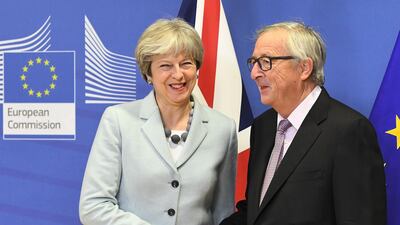Much of the markets' focus last week was on another round of records — from the Dow Jones Industrial Average and S&P 500 closing Friday at new highs, to Bitcoins’ wild ride ahead of the formal launch of futures trading. The spotlight was also on lower implied stock volatility, with the VIX dipping below 10, and the flattening of the Treasury yield curve as two-year yields continued to move up. With all of this going on, it is little surprise that several important data points relating to economic and policy fundamentals attracted a lot less attention. Yet their implications could be quite consequential, both for 2018 and beyond.
This is particularly the case for these four factors:
The synchronised global recovery: Last week's economic data from China and Japan, as well as favourable indicators from Europe and another month of strong employment growth in the US, reinforced the message that the global economy continues to gather momentum. With all four major economic regions now contributing directly to the improved prospects for global growth, these developments could also lower some of the underlying currency and trade tensions.
Policy progress: Improved global prospects are further enhanced by policy advances in the US Congress on the tax bill, which was accompanied last week by indications that the administration intends to announce next month an infrastructure plan, the third element of President Donald Trump's pro-growth push (the other two pieces are deregulation and tax reform).
Less structural economic uncertainty: In Europe, after long and tricky negotiations, the UK and its EU partners reached agreement on what many have described as a tentative divorce settlement. This opens the way for the second stage of more economically constructive discussions on Europe's post-Brexit institutional arrangements.
Continued orderly market acceptance of higher policy rates: Having already priced a very high probability that the Federal Reserve will hike rates when its policy-making committee meets this week, markets have been internalising the likelihood of additional increases next year. For example, yields on two-year Treasury bills, one of the maturities most sensitive to Fed actions, have now risen to 1.80 per cent, or by around 50 basis points in the last three months. This move has occurred without disrupting financial markets or derailing the economy, providing further indications that the Fed is progressing on its "beautiful normalisation" (to adapt a phrase used a few years ago by Bridgewater's Ray Dalio in a different context).
Of course, not all of the backdrop of economic and policy fundamentals is positive. US wage growth, at a 2.5 per cent annualised rate in November, is still relatively low, especially given the decline in the unemployment rate to a 17-year low. Some worry that the flattening of the yield curve is a sign of higher recession risk (though I see it more as a reflection of foreign purchases of longer-maturity U.S. bonds turbocharged by institutional liability-driven investments.)
In addition, Europe’s regional policy progress remains slow as many await the formation of a new government in Germany. And it remains to be seen how the global economy could absorb the simultaneous normalising policies of several systemically-important central banks and the sustainability of pockets of high debt and leverage.
Despite those qualifications, last week’s developments reinforce the prospects for better actual and future growth, thereby increasing the possibility of improved fundamentals validating notably elevated asset prices. Indeed, over the course of 2017, what I have previously labelled the “yes-but” global economy has shifted more in the positive direction, building a more solid foundation for 2018. Moreover, if you believe like me that the global economy faces a meaningful medium-term tipping point — out of the “new normal” either to higher, more sustainable and more inclusive growth or to periodic recessions and unsettling financial instability — this period is consequential not only for the current generation but also future ones.
Mohamed El Erian is a Bloomberg View columnist. He is the chief economic adviser at Allianz SE, the parent company of Pimco, where he served as chief executive and co-CIO. He was chairman of the president's Global Development Council, chief executive and president of Harvard Management Company, managing director at Salomon Smith Barney and deputy director of the IMF. His books include "The Only Game in Town" and "When Markets Collide."

